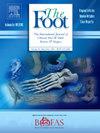Difficulties experienced by podiatrists when performing neurological tests on paediatric patients
Q2 Health Professions
引用次数: 0
Abstract
There is limited research supporting the existence of a standardized assessment tool in South Africa that aids podiatrists in the early diagnosis of developmental delays, including neurological delays, in paediatric patients. The Gait and Lower Limb Observation Proforma (GALLOP) Assessment Tool is a potential solution for South African podiatrists to enhance their assessments.
Aim
This study aimed to evaluate the "ease of use" and "usefulness" of the GALLOP Assessment Tool for podiatrists when performing paediatric neurological assessments.
Methods
A mixed-methods descriptive study was conducted with all Health Professions Council of South Africa (HPCSA)-registered podiatrists in the Johannesburg Metropolitan Municipality. Participants used the GALLOP Assessment Tool for three months before completing a survey assessing its ease of use and effectiveness.
Results
The findings revealed that all participants found the neurological assessment section of the GALLOP Assessment Tool difficult to use. Major barriers included a lack of knowledge, confidence, and time required for proper implementation.
Conclusion
The study highlights a critical gap in podiatrists' ability to conduct neurological assessments due to inadequate training and a lack of standardized tools. Addressing these issues through improved education, structured neurological training, and the refinement of the GALLOP Assessment Tool could enhance the early detection and management of paediatric neurological conditions.
足科医生在对儿科患者进行神经系统检查时遇到的困难
支持南非存在标准化评估工具的研究有限,该工具可帮助足病医生早期诊断儿科患者的发育迟缓,包括神经发育迟缓。步态和下肢观察形式(GALLOP)评估工具是南非足病医生加强评估的潜在解决方案。目的本研究旨在评估GALLOP评估工具在足病医生进行儿科神经学评估时的“易用性”和“有用性”。方法对南非卫生专业委员会(HPCSA)在约翰内斯堡市区注册的所有足科医生进行了一项混合方法描述性研究。参与者使用GALLOP评估工具三个月,然后完成一项评估其易用性和有效性的调查。结果所有参与者发现GALLOP评估工具的神经学评估部分难以使用。主要障碍包括缺乏正确实施所需的知识、信心和时间。结论:该研究突出了由于培训不足和缺乏标准化工具,足病医生进行神经学评估的能力存在严重差距。通过改进教育、有组织的神经学培训和改进GALLOP评估工具来解决这些问题,可以加强儿科神经系统疾病的早期发现和管理。
本文章由计算机程序翻译,如有差异,请以英文原文为准。
求助全文
约1分钟内获得全文
求助全文
来源期刊

Foot
Health Professions-Podiatry
CiteScore
2.00
自引率
0.00%
发文量
37
期刊介绍:
The Foot is an international peer-reviewed journal covering all aspects of scientific approaches and medical and surgical treatment of the foot. The Foot aims to provide a multidisciplinary platform for all specialties involved in treating disorders of the foot. At present it is the only journal which provides this inter-disciplinary opportunity. Primary research papers cover a wide range of disorders of the foot and their treatment, including diabetes, vascular disease, neurological, dermatological and infectious conditions, sports injuries, biomechanics, bioengineering, orthoses and prostheses.
 求助内容:
求助内容: 应助结果提醒方式:
应助结果提醒方式:


